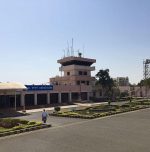Things to know about India’s new parliament building

Prime Minister Narendra Modi inaugurated India’s new Parliament building yesterday and dedicated it to the nation.
Here are some interesting things to know about the new Parliament building:
- The new Parliament building is characterized by its triangular shape.
- It has been designed to honour the sacred geometry found in various religions while also maximizing the use of the triangular plot of land it occupies.
- Architect Bimal Patel explains that the new building is intended to complement the old Parliament and function as part of a unified complex.
- With three storeys and a built-up area of 64,500 square meters, the new building boasts a larger Lok Sabha chamber with 888 seats. Also, it is expandable to accommodate up to 1,272 members.
- The Lok Sabha will serve as a venue for joint sittings in the absence of a Central Hall, which was a focal point in the previous building.
- The new Parliament building features three ceremonial entrances, each designated for the President, Vice-President, Lok Sabha Speaker, and Prime Minister.
- The public entrance, including access for Parliament tours, is expected to be located on Parliament Street.
- Built with eco-friendly techniques, the new structure aims to reduce electricity consumption by 30% compared to its predecessor. It also has rainwater harvesting and water recycling systems.
- The Ministry of Housing and Urban Affairs ensures its functionality for the next 150 years.
- Considering Delhi’s seismic zone classification, the new building has been engineered to withstand earthquakes, addressing concerns about the vulnerability of the old Parliament Building.
- The Lok Sabha chamber showcases a peacock theme. It has intricate designs inspired by the national bird’s feathers adorning the walls and ceiling, complemented by teal carpets.
- The Rajya Sabha chamber, on the other hand, incorporates lotus motifs and features red carpets.
- In both chambers, each Member of Parliament (MP) will have a touch screen on their desk, and two MPs will share a bench.
- The Rajya Sabha chamber can accommodate 384 MPs, a significant increase from the previous capacity of 250, providing flexibility for future changes due to delimitation.
- In addition, the new building includes a Constitution Hall documenting India’s democratic journey, lounge areas, a dining hall, a library, and a central courtyard with a banyan tree.
- Six additional committee rooms and 92 offices for the Council of Ministers have been incorporated.
- Materials from various regions of India have been employed for the interior and exterior. For instance, sandstone from Sarmathura and granite from Lakha village.
- Skilled craftsmen from Mumbai contributed to the wooden architecture design, while Bhadohi weavers crafted traditional hand-knotted carpets.
- The iconic 16-foot-tall bronze statue of Mahatma Gandhi, sculpted by Ram V Sutar, remains positioned between the old and new buildings.
- The exact cost of the new Parliament building remains undisclosed. However, initial estimates were around ₹971 crores, which escalated to ₹1,200 crores. The cost included the expenses for artwork procured by the Culture Ministry.
- Embracing digitization, all records, proceedings, and business-related activities will be stored digitally. Besides, the building showcases galleries exhibiting Indian textiles, pottery, and iconic monuments from across the country.
The new Parliament building serves as a testament to the contributions of approximately 60,000 workers involved in its construction.
Despite the challenges posed by the pandemic, the project implemented health clinics and vaccination camps for on-site workers.
Previously designated for recreational use, the plot opposite the old Parliament House was transformed into a new symbol of democracy, representing India’s progress and aspirations.
Image Credit: Narendra Modi, CC BY 3.0, via Wikimedia Commons
Source: YouTube
Image Reference: https://commons.wikimedia.org/wiki/File:New_Parliament_Building.jpg








Leave a Reply